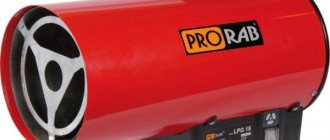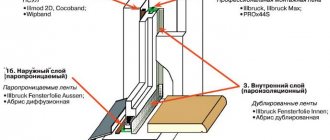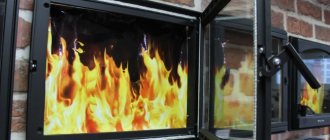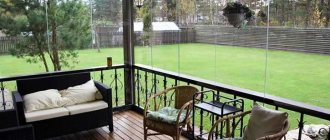30% discount until Dec 19 Call (985) 991-28-10
- home
- Types of stained glass
»
There are quite a few different stained glass techniques, let's study each of them in more detail.
- Contour stained glass
- Filled stained glass windows
- Lacquer stained glass windows
- Tiffany stained glass
- Film stained glass
- Stained glass with photo printing, photo stained glass (printing on glass, photo printing, UV printing)
- Sandblasting stained glass (artistic matting / artistic sandblasting / engraving)
- Faceted stained glass windows
- Fusing (glass sintering)
- Classic (stacked) stained glass
- Glass painting
- Art mosaic
- Artistic bending
- Combined stained glass
- 3D Stained Glass
- Stained glass painting
- Matting
- Glass tile
- Cabochon
- Etching
- Bending
- Pattern "Frost"
- Shebeke (Panjara)
- Erklez
In the modern world there are many different types of stained glass. Their production is a labor-intensive process that requires special skills and knowledge. If you want to add elegance to your interior, pay attention to stained glass windows. Choose from a large number of stained glass techniques, the one you like. Types of stained glass windows amaze with their diversity of both manufacturing techniques and materials.
Tiffany stained glass
This is a technique based on the selection of colors and shades. Tiffany stained glass windows are made as follows:
1. The size is determined and a sketch is developed.
2. The color scheme is selected. This stage is the most important and requires special care. Glass conveys its true color only under special lighting and no photograph can demonstrate it.
3. The glass is cut into pieces, and each piece is ground and adjusted.
4. The fragments are treated around the perimeter with foil and degreased.
5. Then they are laid out on a pre-made matrix and soldered together with lead-tin solder. To give a tint to the solder, it must be covered with a patina, most often black or brown is used.
6. The stained glass window is framed for installation.
Photo stained glass (glass printing, photo printing, UV printing)
Three types of photo stained glass techniques
1. Direct
Printing is carried out on any glass surface using a special printer. To make such photo stained glass, special paints are used that are well absorbed into the glass under the influence of ultraviolet rays or high temperatures.
2. Film
Drawing an image onto a transparent film and then gluing it onto the glass.
3. Triplex
An analogue of the film method, but the pattern is placed between two sheets of glass.
Film stained glass
This is the least expensive way to make stained glass.
Making stained glass using film technology:
1. The drawing is approved.
2. The glass surface is degreased.
3. Parts of the selected image are cut from films of various colors.
4. The film is moistened with water and rolled out with a special rubber roller, which allows you to remove excess water. Gaps are left.
5. Bevels are glued to the gaps using ultraviolet glue. At the last stage, the image is fixed with lead tape running along the bevels. The tape is coated with an oxidizing liquid to give it the appropriate shade.
Sandblasting stained glass windows
Sandblasting stained glass windows are made using air flow and sand. They come in several types:
1. Artistic matting is a technique of applying an image using compressed air and the impact of a special liquid containing metal abrasive particles on a pre-prepared template.
2. Artistic sandblasting - processing with a powerful stream of air-sand mixture with the addition of dyes.
3. Engraving is the application of an image with a large stream of air and sand. The force of the flow is regulated and due to this the depth of the slot varies and sculptural, three-dimensional images are created.
Faceted stained glass windows
This type of stained glass is made as follows:
1. A chamfer is removed along the perimeter of the glass.
2. After removal, it is sanded until matte.
3. The part is polished and becomes completely transparent.
4. To enhance the refraction of rays, the chamfer is made wider.
5. Faceted stained glass windows are inserted into a brass or copper frame, which adds solemnity.
Filled (contour) stained glass windows
This type of technique involves creating a drawing by hand.
1. A drawing is selected and transferred to paper in full size. At the same time, colors are signed on the sketch.
2. The surface of the glass is degreased.
3. Using polymer paint, the outline of the design is applied to the glass under which the sketch is located. It will serve as a barrier.
4. After the contour has completely dried, the elements are filled with paints or varnish.
5. Finished flooded (contour) stained glass windows are allowed to be installed only after 24 hours - this time is allotted so that they can dry well.
Making stained glass: step-by-step instructions
- Place the glass on the prepared stencil so that their edges coincide.
- Thoroughly degrease the glass with alcohol, acetone or vinegar. Dry the surface with a dry, lint-free cloth.
- Transfer the outlines of the design from the stencil onto the glass with a special disappearing marker. If you have experience in drawing, the lines can be applied directly with a contour or contour paste.
Drawing a contour requires accuracy and a precise eye.
- Let the outline dry, otherwise the drawing will smudge.
- Now all that remains is to fill the voids of the drawing with paints. This is done with a thin brush or straight from the tube. Tubes of ready-made paints are equipped with a convenient spout.
Paints are applied to stained glass with a brush or using a tube attachment.
- Paint is applied from the edges to the center. It’s okay if paint gets on the outline while working—touch it up with a wooden stick or toothpick. After drying, special paints become transparent and the outline appears through them.
- If the design involves color transitions, lighter or darker tones are applied after the base ones. They can be mixed or shaded with the main ones using a toothpick.
- Bubbles formed during the work are also removed using a toothpick.
- Let the finished painting dry completely. Some paints require additional coating with nitro varnish, please pay attention to this. This information is indicated on the packaging.
- All that remains is to insert the stained glass into the frame.
Stained glass can be inserted into the frame
To protect yourself from cuts, you can first cover the edges of the glass with masking tape before work.
Video: master class on making stained glass using poured technique
Having mastered the painted and poured techniques, you can try yourself in the English film or fusion technique. This will require a lot of expense, materials and skills, but it's worth it.
Fusing (glass sintering)
A unique technique in which a pattern is created either by baking pieces of glass of different colors and sizes at the same time, or by baking objects into glass. For example, it could be a wire.
Process steps:
1. Colored glass is cut out according to the outline of the design.
2. They are laid out on the base - most often this role is played by transparent glass.
3. The workpiece is placed in the oven. Under the influence of high temperature, the glasses are baked to each other.
Features of stained glass windows
Stained glass windows appeared in the Middle Ages. These were paintings that craftsmen created from multi-colored glass pieces by soldering. The authors of the article “History of the Development of Stained Glass Art” Natalya Guzenko and Anastasia Lodochnikova argue that stained glass is currently used in different styles - from classical to high-tech. New technologies in the production of stained glass, materials, shades and textures of glass make it possible to make stained glass an organic element of the room.
Technologies for creating stained glass windows
Over time, the technology for creating stained glass has changed, improved and again rose to the peak of popularity. There are several techniques for making stained glass windows:
- The Tiffany technique is based on the use of flat and concave glass, so the drawings are more realistic. Galina Serikova, author of the book “Do-It-Yourself Stained Glass,” calls this technology classic. Its inventor was Louis Comfort Tiffany, who lived in the USA in the 19th century. Using this technique, the parts are fastened together with a thin copper strip and then soldered.
Tiffany technique: Needpix
- Fusing is the latest technology in which colored glass is baked in an oven at a temperature of 800 °C. There are no metal connections on this glass. To obtain a pattern, pieces of colored glass are laid out on transparent glass according to the chosen pattern, and they merge under the influence of temperature in the oven. Images on such glass are made flat, convex or blurry, like in a watercolor painting.
- Film stained glass is considered the simplest and most affordable to make with your own hands. The method of gluing film stained glass is called English. Copper or brass broach profiles and a light-diffusing film are glued onto the main glass. The drawing can be printed from templates or made yourself.
- Painted stained glass is an artistic picture on glass made with stained glass paints. Such stained glass windows decorate arches at the entrance, loggias, balconies, staircases, greenhouses, etc. The drawings partially replace curtains and blinds, adding a bright color scheme to the room. Yulia Krasavina, author of the scientific article “Stained Glass: History and Modernity,” believes that glass painting is an original way to diversify the interior, giving it liveliness and color.
Painted stained glass: Pixabay
What types of stained glass are popular?
Stained glass windows are classified according to different criteria. The following factors are taken into account:
- A base into which multi-colored glasses are inserted. They are inserted into wooden and plastic frames. But stained glass windows look more impressive in double and triple glazed windows, where the design is placed on the inner glass.
- Size, weight and shape. The size of the stained glass window often corresponds to the size of the window area. Colored glasses can be different in shape, depending on the design. The weight of the glass depends on the technique used.
- Design. Stained glass windows in small rooms are made light to fill the room with light from outside. To create panoramic landscapes, select bright pieces of glass or light-scattering film. Artists create stained glass using special paints based on sketches.
- Accommodation. Stained glass windows decorate window openings on the wall, the ceiling, the opening above the door, and make panoramic stained glass windows on the entire wall.
In order for stained glass windows in a room to look elegant and rich, the stained glass window must match the color and style with the interior of the premises.
Classic (stacked) stained glass
This technique is one of the easiest to produce stained glass. Classic stained glass is made on a typesetting table from glass fragments that are cut in advance. This type of technique is used in the manufacture of stained glass windows that do not contain painting.
Several assembly methods are used:
1. The mosaic pieces are assembled directly onto a pre-prepared metal structure.
2. The fragments are laid out on a sheet of glass and glued to it.
How to create a stained glass window with your own hands
For a creative person, it will not be difficult to change the interior with the help of stained glass windows. In order for a stained glass window to transform even old and gloomy furniture, we will try to select bright transparent glass and focus on the proven Tiffany technique. A novice craftsman will need skills in working with glass and a little imagination.
What you need to create a stained glass window
Stained glass made from multi-colored glass is resistant to temperature changes and mechanical stress. At the preparatory stage, select a drawing. The picture that needs to be transferred on glass should be simple for a beginning stained glass artist. It’s better to stick to geometric patterns with the maximum number of straight lines.
For work you will need the following materials:
- copper film 5-6 mm wide for gluing stained glass on sections;
- sheets of colored glass 4-5 mm thick;
- soldering flux;
- solder (tin-lead wire).
You also need the following tools:
- glass cutter;
- forceps;
- diamond-coated file or grinder;
- soldering iron 75 V;
- marker.
Tools for creating stained glass: Pixabay
To ensure a bright picture and a reliable window design, choose the right glass for stained glass. Colored transparent glass, which allows light to pass through from outside, is popular. Although the colors can be rich and bright.
3D Stained Glass
This is the latest technique for creating stained glass, creating the illusion of a three-dimensional image.
Manufacturing:
1. A sketch is selected and pieces of glass are cut.
2. Each piece is processed: cutting off irregularities and turning chips.
3. All glass particles are joined into a whole image using brass solder.
4. Next, the painting is placed between two sheets of glass - this provides the desired effect and strength.
5. The workpiece is placed in an oven and heated at a temperature of 850 degrees. Production time is 10 minutes. When the workpiece has cooled, it is wrapped in aluminum tape and filled with rubber in liquid form.
Etching
A technique based on the interaction of hydrofluoric acid with one of the glass elements, namely silicon dioxide. A protective stencil is used that allows you to create a design. Etched stained glass is three-dimensional drawings, the relief of which is noticeable on the glass.
Manufacturing:
1. First, a protective film is applied to the glass.
2. On film - the outline of the future drawing.
3. Next, the image is melted with acid.
This method requires special care because the acid corrodes not only glass, but also other surfaces, such as skin, if it comes into contact with it.
Advantages and disadvantages
Panoramic windows decorated with stained glass designs:
- look luxurious and presentable, highlighting the house;
- open the premises to natural daylight;
- give you the opportunity to enjoy panoramas near the house;
- not the most common solution for a private home, which adds impressiveness to the exterior and interior.
But, like any option, it is not without its drawbacks:
- large windows, especially those with stained glass, are expensive;
- stained glass windows attract the attention of passers-by; they will often look into the premises, especially in the evening;
- a large area of glazing is difficult and labor-intensive to clean, and dirty stained glass windows look very sloppy both from the street and from the room;
- no matter what double-glazed windows you choose, in winter the room will be much colder than others, and in summer it will heat up very quickly;
- Due to sunlight, the furniture and decoration of the room will fade much faster.
Pattern "Frost"
This technique is performed in several stages:
1. The most difficult stage is preparing the surface; it must be scratched, etched or rubbed with an abrasive metal.
2. Apply wood glue or gelatin.
3. Place in oven.
4. Allow the glue to dry so that it shrinks and pulls out thin pieces of glass.
Stained glass made using this technique resembles frosty patterns on the window.
Shebeke (Panjara)
This is a three-dimensional lattice, which is most often cut out of stone or wood, thereby forming a window frame. It uses colored glass.
Problems with stained glass windows and ways to solve them
Huge stained glass structures require a well-planned frame and foundation of the building. You should not make such a proposal at a late stage in the design of your home. Large windows are difficult to manufacture, transport and install on site. All this significantly eats up the budget of the house project.
Stained glass windows mean, first of all, a lot of light, especially in sunny weather. It can cause discomfort, so you should consider tinting the windows or installing blinds.
This problem can be partially solved by drawing. It is also worth considering the color scheme of the stained glass so that it does not irritate during the day and the colored spots fit harmoniously into the interior.
Any large window, even partly patterned, raises privacy and confidentiality issues. A beautiful pattern attracts attention, and as a result, passers-by will often look into the windows of the house. The most problems arise in the evening, when the interior lighting of the house very clearly shows what is happening in the room. In some cases, curtains or blinds solve the problem. A more advanced option is the use of double-glazed windows with variable levels of transparency - nothing will be visible from the street, but visibility from the inside is excellent.
A fairly large window causes serious problems with ensuring a comfortable temperature inside. In summer the room heats up quickly, in winter it will be very cold. This creates additional difficulties in designing the room. In cold latitudes, “heating” double-glazed windows are used and the internal walls of the room are equipped with additional radiators. In warm latitudes, the emphasis is on mirrored double-glazed windows, air conditioning and ventilation.
It is customary to place a radiator under a standard window, which warms up the room, and a double-glazed window above it. With a panoramic window, such a solution will be either impossible or insufficient. Condensation and frost will appear on cold glass. This not only spoils the view from the window, but also provokes mold and destruction of the floor. The problem is solved in a comprehensive manner: installation of energy-saving double-glazed windows, warm baseboards or floor convectors. They do not spoil the appearance of the window or the surrounding area at all and serve as additional sources of heating the room.
Underfloor heating convectors
Large windows create problems with cleaning them. You will have to buy brushes with telescopic handles, gadgets with remote control, or call cleaning services. If the house is located in an ecologically clean area, you can get by with two cleanings a year. But if the housing is in the city center, then the glass will get dirty very quickly.











